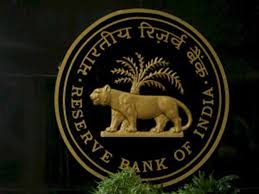 The Finance Act, 2015 abolished the wealth-tax. Thus, taxpayers are no longer required to file returns of wealth tax from assessment year 2016-17 onwards. However, the Hon’ble Finance Minister in his budget speech had announced that information which was to be furnished in wealth tax return will now form part of Income Tax Returns (ITR).
The Finance Act, 2015 abolished the wealth-tax. Thus, taxpayers are no longer required to file returns of wealth tax from assessment year 2016-17 onwards. However, the Hon’ble Finance Minister in his budget speech had announced that information which was to be furnished in wealth tax return will now form part of Income Tax Returns (ITR).
Thus, in new ITR forms, namely, ITR-1, ITR-2, ITR-2A and ITR-4S the Government has imposed obligation on Individuals and HUFs having income exceeding Rs 50 lakhs to furnish information regarding assets and liabilities.
2.0 Changes made in new ITR forms:-
2.1 Declaration of value of assets and liabilities by Individuals/HUF earning above Rs 50 lakhs:-
[ITR 1, 2, 2A, 3, 4, 4S]
The new ITR forms introduce a new Schedule requiring individuals/HUFs to declare the value of assets and liabilities if their total income exceeds Rs. 50 lakhs. Assets include immovable assets and movable assets. Under the heading immovable assets, taxpayers have to disclose cost of land and building. Under movable assets cost of Jewellery, bullion, vehicles, Yachts, boats, aircraft and cash in hand need to be disclosed. Further, such taxpayers need to disclose all liabilities in relation to such assets.
Note: Individuals and HUFs with income exceeding 25 lakhs, filing ITR-3 and ITR-4 were already required to furnish information of their assets and liabilities. Now such threshold limit of 25 lakhs has been increased to 50 lakhs in new ITR-3 and ITR-4 for disclosure of details of assets and liabilities.
2.2 TCS credit for individual taxpayers:-
[ITR 1, 2, 2A]
Sub-section (1D) was inserted in Section 206 by the Finance Act, 2012 to reduce the practice of cash payments for purchase of bullion and Jewellery and for curbing the flow of unaccounted money in the trading system.
Section 206(1D) provides that the seller of bullion and Jewellery shall collect TCS at 1% of sale consideration from buyer if such sale consideration is received in cash and it exceeds:
i) 2 lakh, in case Bullion; and
ii) 5 lakh, in case of Jewellery.
However, in the absence of any row in the ITR Forms (ITR 1, 2 and 2A), individual taxpayers were unable to claim credit of such TCS. Therefore, new ITR Forms provide an option to claim TCS by the individual taxpayers.
2.3 Firms can file ITR-4S for presumptive income:-
[ITR-4S]
Under the existing provisions of Rule 12, firms were required to file ITR 5 even for presumptive income. The amended Rule 12 would now allow firms to file ITR 4S for presumptive income. Accordingly, a separate row is provided for in ITR 4S to claim deduction of interest and salary paid by the firms to the partners.
2.4 Additional deduction for contribution to NPS under Section 80CCD :-
[ITR 1, 2, 2A, 3, 4 and 4S]
A new sub-section (1B) was introduced in Section 80CCD by the Finance Act, 2015 to provide for an additional deduction of upto Rs. 50,000 for investment in National Pension Scheme. Accordingly, a new row is now introduced in the ITR Forms to claim benefits of such additional deduction.
2.5 Details of pass through income of business trust or investment fund:-
[ITR 2, 2A, 3, 4, 5, 6, 7]
As per provisions of Section 115UA and Section 115UB,pass through status is provided in respect ofincome [other than income from business or profession] of business trust/investment fund. Thus, income distributed by the business trust/investment fund is to be taxed in the hands of the unit holders.
The new ITR Forms have a new ‘Schedule PTI’ for reporting of pass through income of business trust/investment fund. Following details should be provided by such trust in ITR forms:
■ Name of business trust/investment fund
■ PAN
■ Head of income
■ Amount of income
■ TDS on such amount, if any.
2.6 Disclosure of details regarding partnership firm by a partner:-
[ITR 3, 4]
In ITR forms there is a separate ‘Schedule IF’ wherein partners are required to disclose the name of the partnership firms in which he is a partner. Now partners have to disclose whether such firm is liable to transfer pricing audit under Section 92E. Separate column has been inserted for such purpose in ‘Schedule IF’.
2.7 Share of income from firm/AOP/BOI:-
[ITR 3, 4, 5, 6]
Share of income from partnership firm, AOP and BOI is exempt from tax in hands of recipient. However, such exempt income had to be disclosed in old ITR forms under ‘Schedule EI’. Now, disclosure of such exempt income has been done away with in new ITR forms.
2.8 Deduction of additional investment allowance:-
[ITR 4, 5, 6]
Section 32AD was inserted by the Finance Act, 2015 to provide for an additional investment allowance to an undertaking set-up in the notified backward areas in the States of Andhra Pradesh or Telangana. Suitable safeguards have been provided in the provision for restricting the transfer of the plant or machinery for a period of 5 years. On transfer of such asset within five years, the amount of deduction already allowed shall be deemed as income from business or profession (i.e., deemed income under Section 32AD) in the year of transfer.
A separate row has been inserted in new ITR forms to claim such deduction under Section 32AD. Further, a separate row is provided to offer the deemed income to tax under Section 32AD.
2.9 Effect of Income Computation and Disclosure Standards (‘ICDS’):-
[ITR 4, 5, 6]
New ‘Schedule ICDS’ has been inserted in ITR forms wherein effect of Income Computation and Disclosure Standards (‘ICDS’) on profit needs to be disclosed.
2.10 Percentage of commercial receipts by a trust:-
[ITR 7]
The Finance Act, 2015 has substituted the proviso to Section 2(15) to provide that the advancement of any other object of general public utility shall not be a charitable purpose, if it involves the carrying on of any activity in the nature of trade, commerce or business, unless:
i) such activity is undertaken in the course of actual carrying out of such advancement of any other object of general public utility; and
ii) the aggregate receipts from such activity or activities during the previous year, do not exceed 20% of the total receipts, of the trust or institution undertaking such activity or activities, of that previous year.
In other words, advancement of any other object of charitable purpose shall not be deemed as charitable if receipts from any commercial activity exceed 20% of total receipts. Accordingly, a new row is inserted in ITR 7 to disclose percentage of commercial receipts vis-à-vis total receipts in order to ensure that such condition (as given hereinabove) is not violated.
2.11 Application of income by a trust:-
[ITR 7]
Income of charitable or religious trust is exempt if 85% of its income is applied for charitable or religious purposes in India. If income applied for charitable or religious purposes during the previous year falls short of 85% because such income has not been received during the year or due to any other reason, an option is given to assessee to apply such income in future years in prescribed manner. Assessee has to choose such an option by filing Form 9A to the Assessing Officer before due date of filing return of income under Section 139(1).
Now a separate row is provided in new ITR 7 requiring trust to confirm if it has filed Form 9A to exercise such an option and the date of filing of such form.
2.12 Details to be given by Universities, hospitals, educational institutions:-
[ITR 7]
Exemption under sub-clause (iiiab) and (iiiac) of Section 10(23C) is available to universities or educational institutions, hospitals or other institutions which are wholly or substantially financed by the Government, subject to certain prescribed conditions. The Finance Act, 2015 has amended the provisions of Section 139 to provide that such entities covered under clauses (iiiab) and (iiiac) of Section 10(23C) shall be mandatorily required to file their returns of income.
Now such universities, hospitals, educational institutions, etc., have to disclose their name and annual receipts in new ITR 7. Further, they are also required to disclose the amount eligible for exemption in ITR 7.
2.13 Minimum Alternate Tax (MAT) disclosure:-
[ITR-6, 7]
The Finance Act, 2015 had excluded following incomes for computing MAT liability:
i) Share of a member in the income of the AOP/BOI, on which no income-tax was payable.
ii) Passive income (like capital gains, interest, royalty, FTS) accruing or arising to foreign company if income-tax payable thereon was less than 18.5%.
iii) Amount representing:
– Notional gain on transfer of a capital asset, being share of SPV to a business trust in exchange of units allotted by that trust referred to in clause (xvii) of Section 47; or
– Notional gain resulting from change in carrying amount of said units; or
– Gain on transfer of units referred to in clause (xvii) of section 47.
iv) Loss on transfer of units referred to in Section 47(xvii) (subject to conditions)
Consequently, the Finance Act, 2015 had provided for addition of related expenditure on aforesaid income while computing MAT liability.
Separate row have now been inserted in ITR forms to incorporate such changes.
2.14 Disclosure of Audit information:-
[ITR 5, 6]
In new ITR forms there is a separate row for disclosure of following details if taxpayer is liable for audit under any Act [other than the Income Tax Act]:
1) Act and Section under which taxpayer is liable for audit
2) Date of furnishing of Audit Report.
2.15 Deduction of sum paid for purchase of sugarcane:-
[ITR-5]
The Finance Act, 2015 had inserted Section 36(1)(xvii) to provide that co-operative society, engaged in the business of manufacturing of sugar, could claim deduction of expenditure on purchase of sugarcane to the extent of price approved or fixed by the Government. Expenditure in excess of such fixed price was to be disallowed.
New ITR-5 has inserted a separate row for disclosure of sum which is disallowable under Section 36(1)(xvii).
2.16 Deduction under section 80JJAA:-
[ITR 4, 5]
Old provisions of section 80JJAA, inter alia, provided for deduction to an Indian company, deriving profits from manufacture of goods in a factory. The quantum of deduction allowed was equal to 30% of additional wages paid to the new regular workmen employed by the assessee in such factory, in the previous year, for three assessment years including the assessment year relevant to the previous year in which such employment was provided.
With a view to encourage generation of employment, the Finance Act, 2015 had amended Section 80JJAA so as to extend the benefit of such provision to all assessees having manufacturing units rather than restricting it to corporate assessees only.
New ITR-4 and ITR-5 forms now contain a separate row for such taxpayers (other than corporate taxpayers) to claim benefit of such deduction under Section 80JJA







